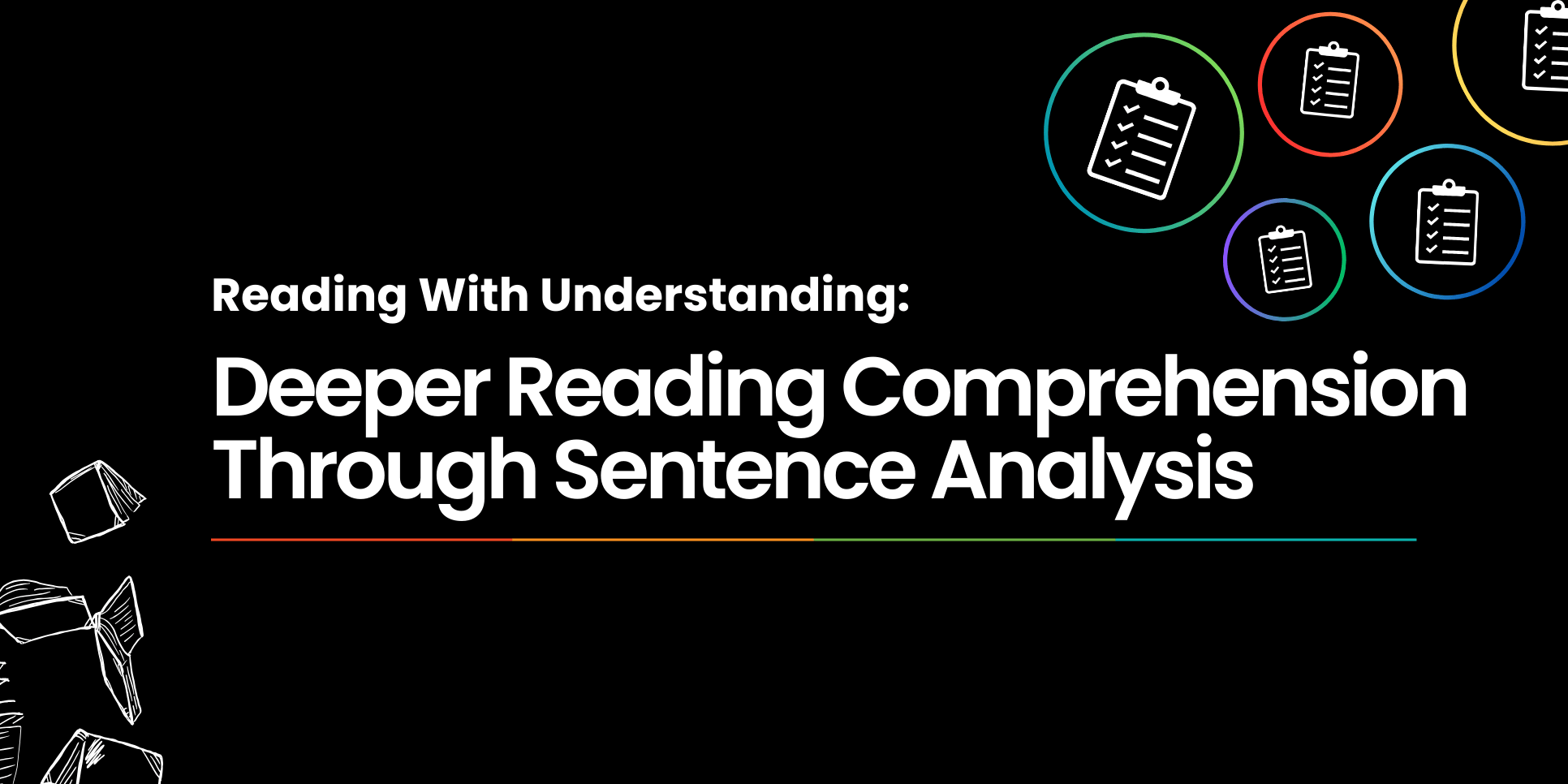What the Research Says
After examining how to teach text structure and vocabulary, we continue with our series on reading comprehension by exploring sentence analysis.
Sentence analysis encompasses critical skills for skilled reading, including:
- Understanding syntax, or how words, phrases, and clauses are arranged
- Syntactical awareness, the ability to examine relationships between words in sentences
- Semantics, understanding word choices
Studies show that differences in students’ ability to understand syntax affect their reading comprehension, even if they have equal abilities in decoding and memory tests. This becomes more noticeable as students progress to higher grades. As texts get more complex, misunderstanding a sentence can have a cascading effect that leads to misunderstanding entire sections of text.
Sentence analysis is an essential skill for understanding meaning, but also for:
- Analyzing information critically,
- Engaging in higher-level texts and discussions,
- Following the flow of ideas,
- Understanding figurative language.
Like other reading comprehension skills, sentence analysis is something that should occur while the student is working on decoding, so they learn to process meaning efficiently as they’re reading.
Why Sentence Analysis Should Be a Part of Reading Intervention
Sentence analysis is a skill that often receives less attention and time than vocabulary work. It can be seen as overly technical for younger students, while older students are assumed to have naturally learned it through regular classroom reading and writing. Reading intervention provides the environment and opportunity to address the thought process behind analysis, which is essential for skilled reading.
Sentence analysis is also a critical skill for English language learners. Sentence patterns and structure differ depending on the language, and understanding these patterns in English is necessary for both comprehension and writing.
Working on sentence analysis in tutoring allows students to engage with comprehension work at a more granular and focused level, giving them the tools they need to break a complex text into manageable chunks - a lifelong skill.
Hoot Reading’s Approach to Sentence Analysis Instruction
Hoot tutors use grade-level texts that expose students to the vocabulary and sentence structures they’ll encounter in their classrooms.

The page above is from the book “Breakthroughs in Planet and Comet Research,” by our partners at Lerner Publishing. This is an ideal example of a text that can be used for sentence analysis, as the meaning of each sentence depends on understanding the previous ones. As the tutor models the analysis, they talk through their thought process, externalizing it for the student and encouraging rich discussion.
Sentence #1.
The tutor begins by addressing words essential to understanding the sentence - in this case, the names. “There are three names in this sentence, ‘NASA,’ ‘Cassini,’ and ‘Saturn.’” The tutor models what they would like the student to do. “We know that Saturn is a planet. NASA is an organization that studies and explores space.” They then ask the student to look at the context and see if they can explain the last name. “What do you think ‘Cassini’ is, if NASA sent it to study Saturn?” They can also ask the student to examine the sentence within the framework of the paragraph. “From this first sentence, what do you think the topic of this section is going to be?”
Sentence #2.
Throughout the analysis, the tutor brings attention to elements of a sentence, like the subject, verb, and adjectives. They can ask, “In this sentence, who or what is discovering Saturn’s unknown moons? How do we know?” To confirm that the student understands what they have read so far, the tutor can ask the student to restate the information from the first two sentences. “From what we know so far, can you tell me in your own words what Cassini was doing?”
Sentence #3.
This sentence allows the tutor and student to discuss how the author compares the size of Saturn’s moons. The tutor can ask broader questions, like “How do we know that the author is comparing the sizes of the moons in this sentence? How does the author show us the size differences?” They can also hone in on individual words. “What word in the sentence tells us that there will be a difference in size between the moons?”
Sentence #4.
In this sentence, the author uses a contrast word (e.g., but, yet, however, etc.). The tutor can ask the student if they see a contrast word, or point it out to them. They can discuss how the word points out a difference from what was previously stated. “The author uses a contrast word, ‘but,’ in this sentence about the moons Titan and Enceladus. Why are they pointing out these two moons in particular?”
As the student engages in discussions about sentences, they’re developing a better understanding of the topic at hand, how texts are structured, and how the English language works.
Join us as we conclude our series on reading comprehension with strategies for teaching verbal reasoning.
Interested in how Hoot Reading provides full-spectrum structured literacy tutoring? Contact us to find out more.
